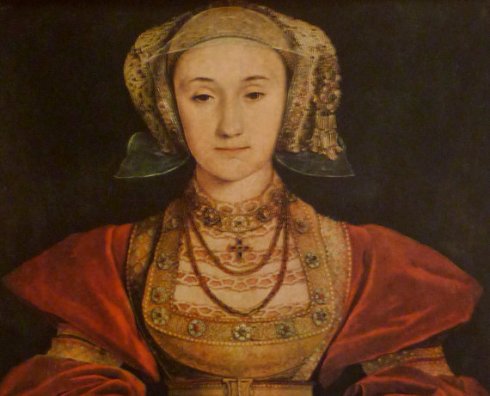On the 1st of January 1540, King Henry VIII met Anne of Cleves for the first time in Rochester, where she was having a short rest during her journey to Greenwich. Henry wanted to surprise his wife-to-be, not knowing how negatively surprised he himself would be after this meeting.
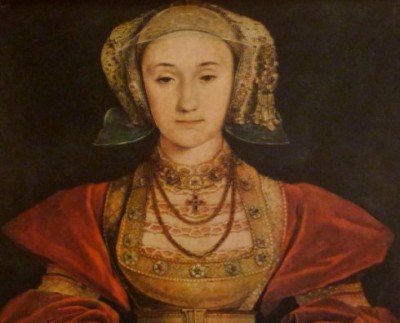
After Jane Seymour’s death 24th October 1537, Henry mourned for her over two years. Jane was the only wife who didn’t fail him and gave him a son, which immortalized Jane’s name in Henry’s eyes. But years were passing, and the king still had only one son to inherit the throne, so he needed to remarry and secure the future of the Tudor dynasty.
It was Thomas Cromwell, the king’s chief minister, who suggested Anne of Cleves’ candidature for the king’s next wife and consort, which happened during the negotiations with the Schmalkaldic League in 1538. Cromwell saw the benefits of allying England with the Duchy of Cleves, which was not ideal but was still practical from political perspective. John III, Duke of Cleves and Anne’s father, was neither Lutheran nor a member of the league, but he was powerful and was closely linked to the Lutheran leader – John Frederick I, Elector of Saxony, who was married to Anne’s elder sister, Sibylle of Cleves.
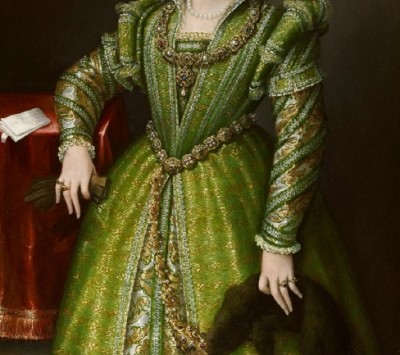
During the long years of his reign, Henry played a crafty diplomatic game with France and Spain, establishing political alliances with one of them while keeping itself open for an opposite alliance if circumstances fitting his interests emerged. The break with the Rome left the country and nation isolated, in quite a vulnerable position. France and Spain were Catholic countries, and, in 1537, a papal delegation headed by Reginald Pole, who lived in self-imposed exile in Rome and was Henry’s strong opponent in the English Reformation, swayed France and Spain to align against England. There was hope for the formation of a Catholic league against the heretical King of England.
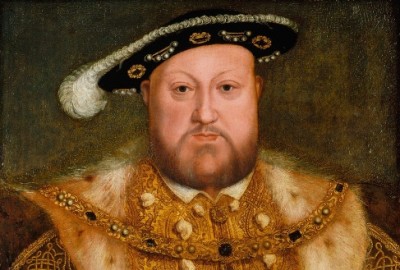
The international situation continued to worsen. Pope Paul III excommunicated Henry in December 1538, and the English began to fear that King Francis I of France and Emperor Charles V were planning invasion. Henry, Cromwell, and the king’s other ministers were becoming increasingly worried about the ever-heating international situation, considering the possibility to secure a new alliance through the king’s marriage to a foreign princess. Encouraged by Cromwell and his ministers, Henry began to think of remarriage.
King Henry took the question seriously. He didn’t want to make “a blind betrothal proposal”. He wanted to get a young, beautiful, intelligent, and fertile bride, who would breathe into his aging body youth and energy, would please him as a lover and a companion, and would birth him more sons. To make sure that his bride would fit his strict requirements, Henry had agents in foreign courts report to him on the appearance and other qualities of various candidates, and painters were dispatched to create their portraits.
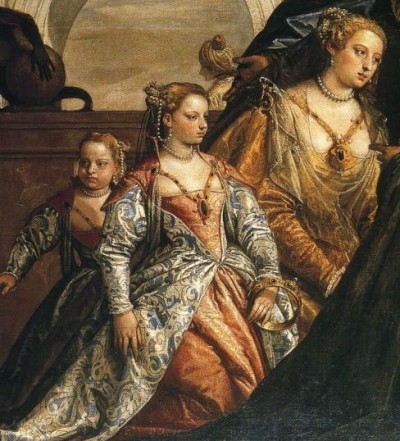
In “Six Wives: The Queens of Henry VIII”, David Starkey writes about the first contacts with the Cleves court:
“Early in 1539 the English took the first soundings in the Saxon court. The English ambassador, Christopher Mont, had two sets of instructions: his official ones from Henry, and another, secret set from Cromwell. The latter were addressed by Cromwell ‘to his friend Christopher Mont’, and ordered him to make discreet enquiries about ‘the beauty and qualities of [Anne], the eldest of the two daughters of Cleves, her shape, stature and complexion’. If his enquiries led him to think that ‘she might be likened unto his Majesty’, he was to suggest the proposed marriage to the Saxon minister Burchard, though the formal initiative would have to come, it was made clear, from Cleves.
Anne, Mont quickly discovered, had won golden opinions all round. ‘Everyman’, he reported to Cromwell, ‘praiseth the beauty of the said Lady, as well for the face, as for the whole body, above all other ladies excellent.’ Among the superlatives one struck home particularly with Henry. ‘She excelleth’, it was reported, ‘as far the Duchess [of Milan], as the golden sun excelleth the silvern moon.”
Anne of Cleves had a younger “rival” for Henry’s hand in a marriage – Christina of Denmark, a niece of Emperor Charles V.
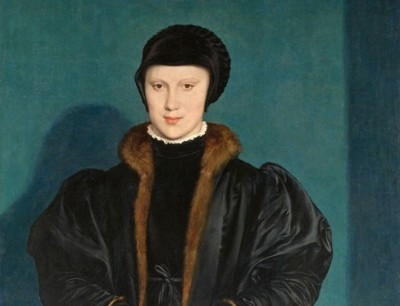
Christina was already a widow, but that didn’t preclude Henry from considering her as his consort. In 1533, she was married by proxy to Francesco II Sforza, Duke of Milan, and she made her official entry in Milan, accompanied by splendid festivities. At the time of their marriage, her husband was already physically weak: he had never fully recovered from an assassination attempt on his life – he had been poisoned but had been felicitous to survive. The Duke of Milan died only two years later, in 1535.
Christina of Denmark was watched by John Hutton, the English representative in the Netherlands, during her stay at the Imperial court in Brussels. Hutton wrote about the sixteen-year-old widowed Duchess:
“She is not pure white as (Jane Seymour) but she hath a singular good countenance, and, when she chanceth to smile there appeareth two pits in her cheeks, and one in her chin, the witch becometh her right excellently well.”
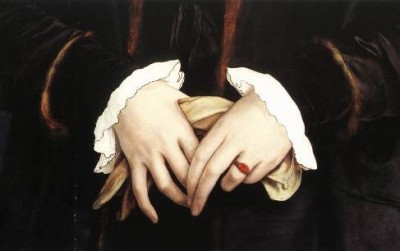
Rumours about Christina and characterizations of her beauty and her character enkindled a flame of desire in Henry’s heart, and he quickly became enamoured by her. The king sent Hans Holbein the Younger to Brussels, and the resulting portrait confirmed Christina’s breathtaking beauty. Henry’s passions were fanned white hot, and he fell in love with the young woman without meeting her. However, Henry’s marriage proposal didn’t go ahead because Christina was strongly opposed to the idea of marrying him.
Appalled by Henry’s treatment of Anne Boleyn and Catherine of Aragon, Christina of Denmark said:
“If I had two heads, I would happily put one at the disposal of the King of England.”
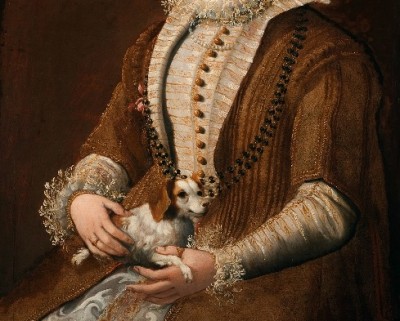
By March 1539, Henry entered into marriage negotiations with the Duke of Cleves, who had two unmarried daughters – Anne and Amalia.
The king resolved to see the portraits of Anne and Amalia before choosing whom to marry. The matter was discussed with the Cleves minister Olisleger by the English envoys, ‘the little doctor’, Nicholas Wotton and Richard Beard. Two recent portraits of Anne and Amalia, probably by Barthel de Bruyn the Elder, were offered, but the English agents enlightened Henry that the said portraits should be taken with a pinch of salt because the painters were able to catch only a glimpse of the two ladies – they couldn’t see them in full because they were dressed in German Protestant fashion.
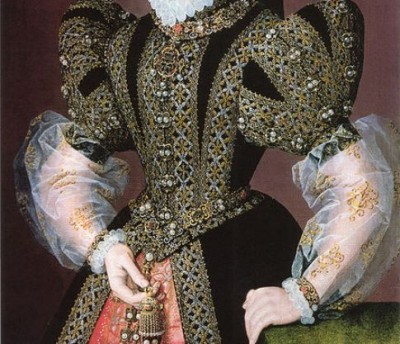
In early July 1539, Henry sent a new delegation to the Cleves court in Dusseldorf, led by Dr William Petre, with the purpose to demand to see the two women ‘since one of them [was] to be their Queen’ and to continue negotiations with the Duke.
Soon Wotton and Beard returned to England. They probably had two portraits of the Cleves maidens with them, but we don’t know about this for sure. In about a week, the envoys and Holbein were again dispatched by the king to Cleves, where they arrived in early August of 1539. Holbein started working on the portraits straight away and finished in about a week. Then the king’s party hastened to return to England.
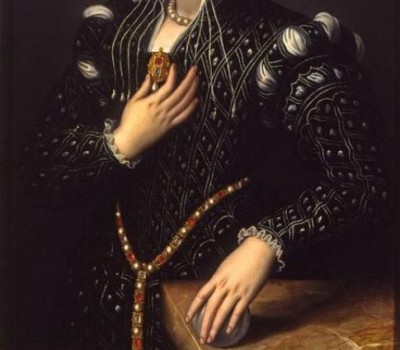
At the beginning of September, the news was promulgated that a new embassy headed to Dusseldorf to finalize the marriage treaty. Contrary to the infamous myth, we don’t know anything certain about Henry’s reaction to the portraits presented to him by Holbein, and Holbein wasn’t the one who could exaggerate or belittle beauty or ugliness. Thus, there is a high probability that Henry simply heard a lot about Anne and was fascinated by the illusive image of Anne of Cleves which he had created in his head.
Henry’s choice of brides was limited to Anne and Amalia after Christina’s rejection. England needed a new political alliance, and he craved to have a second son, but he didn’t have a bunch of available and agreeable brides to choose from. Perhaps, Henry made up his mind to marry Anne of Cleves because she, at her twenty four, seemed to him a more suitable candidate for the role of his wife than her younger sister Amalia.
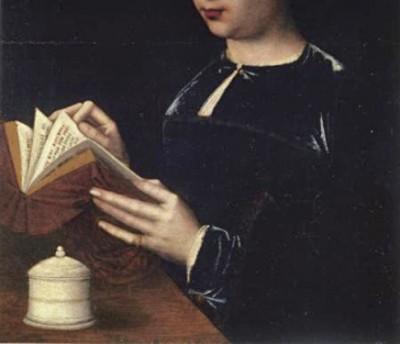
Unfortunately, Henry didn’t know many things about Anne of Cleves before their first meeting, which lay the ground for the lack of his understanding of her true personality and her upbringing.
Wotton told the king a lot about Anne, including the fact that Anne was the Duchess of Cleves’ favourite daughter and that she was “of very lowly and gentle conditions, by the which she hath so much won her mother’s favour that she is very loath to suffer her to depart from her.’
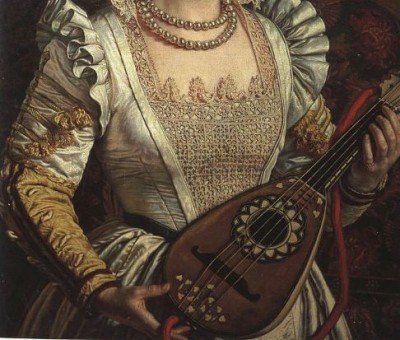
Henry was in the dark that Anne’s upbringing wasn’t suited for life in at the English court. He wasn’t aware that Anne had been given only elementary education for a highborn noblewoman, usual by the standards of the Tudor time. Anne could read and write in German, but she couldn’t speak foreign languages. She was proficient with needlework and good at other domestic skills. But Anne couldn’t dance, play the lute and other music instruments, and she wasn’t taught to flaunt herself, there was no coquetry in her.
David Starkey writes about Henry’s feelings for Anne of Cleves:
“But, in any case, by this point Henry was almost beyond putting off. For he had fallen in love, not as previously with a face but with an idea. And his feelings were fed not with images but with words. All over the summer, Cromwell and his agents had told him that Anne – the beautiful, the gentle, the good and the kind – was the woman for him. Finally he had come to believe them.
Only a sight of the woman herself might break the spell.”
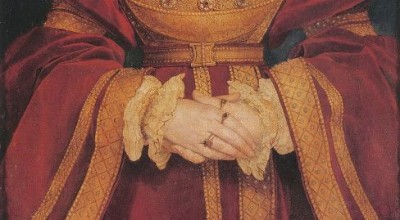
The Imperial ambassador Eustace Chapuys wrote about Anne of Cleves’ arrival in England and her first meeting with King Henry:
1539
This year on St John’s Day, 27 December, Lady Anne, daughter of the duke of Cleves in Germany, landed at Dover at 5 o’clock at night, and there was honorably received by the duke of Suffolk and other great lords, and so lodged in the castle. And on the following Monday she rode to Canterbury where she was honorably received by the archbishop of Canterbury and other great men, and lodged at the king’s palace at St Austin’s, and there highly feasted. On Tuesday she came to Sittingbourne.
1540
On New Year’s Eve the duke of Norfolk with other knights and the barons of the exchequer received her grace on the heath, two miles beyond Rochester, and so brought her to the abbey of Rochester where she stayed that night and all New Years Day. And on New Years Day in the afternoon the king’s grace with five of his privy chamber, being disguised with mottled cloaks with hoods so that they should not be recognized, came secretly to Rochester, and so went up into the chamber where the said Lady Anne was looking out of a window to see the bull-baiting which was going on in the courtyard, and suddenly he embraced and kissed her, and showed here a token which the king had sent her for New Year’s gift, and she being abashed and not knowing who it was thanked him, and so he spoke with her. But she regarded him little, but always looked out the window…. and when the king saw that she took so little notice of his coming he went into another chamber and took off his cloak and came in again in a coat of purple velvet. And when the lords and knights saw his grace they did him reverence…. and then her grace humbled herself lowly to the king’s majesty, and his grace saluted her again, and they talked together lovingly, and afterwards he took her by the hand and led her to another chamber where their graces amused themselves that night and on Friday until the afternoon.
… So she came to Greenwich that night, and was received as queen. And the next day, being Sunday, the king’s grace kept a great court at Greenwich, where his grace with the queen offered at mass, richly dressed. And on Twelfth Night, which was Tuesday, the king’s majesty was married to the said queen Anne solemnly, in her closet at Greenwich, and his grace and she went publicly in procession that day, she having a rich coronet of stone and pearls set with rosemary on her hair, and a gown of rich cloth of silver, richly hung with stones and pearls, with all her ladies and gentlewomen following her, which was a goodly sight to behold.”
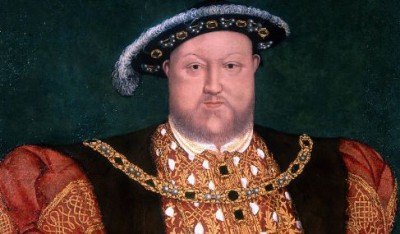
Henry couldn’t foresee that the real Anne of Cleves would be different from his dream bride. Upon arrival in Rochester, the king ordered his attendant, Sir Anthony Browne, to notify Anne that one of his representatives had delivered for her the king’s New Year gift, a special sign of his attention and benevolence. Then, having disguised himself, Henry entered the chamber.
The king’s dreams were shattered. Not suspecting her husband-to-be was burning with impatience to see her, she wasn’t prepared to receive the king: she was standing near the window, observing a bull-fight which had been laid on for her entertainment, and she didn’t recognize Henry in a servant who appeared in her chamber. She didn’t greet him courteously as she would have greeted the king, and he, abashed by her disinterest, strode towards her and tried to kiss her, but she didn’t welcome his advances.
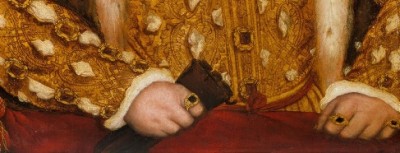
Only later, the poor German princess realized that the disguised servant was the King of England himself! Henry was so shocked and so humiliated that he took an immediate dislike to Anne, saying “I like her not!”

